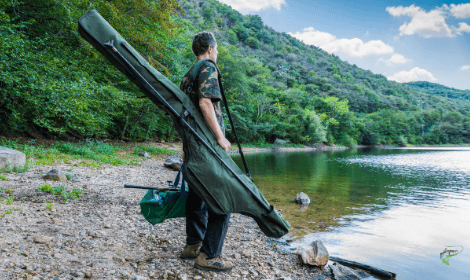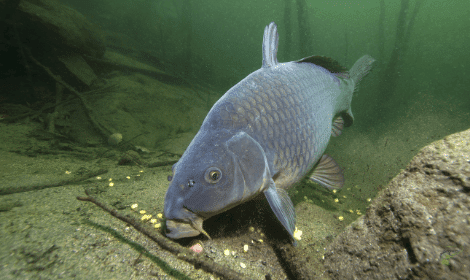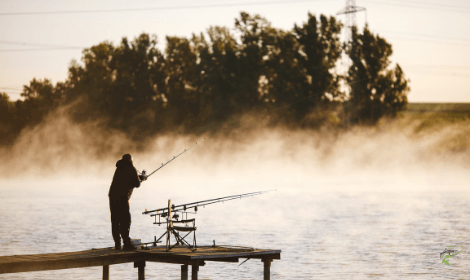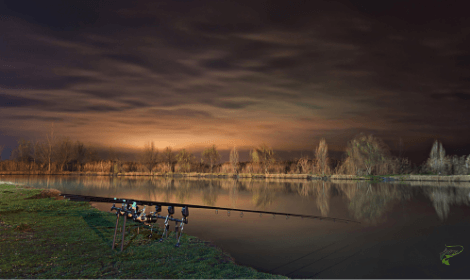
You have all your gear. Rods rigged, bait accounted for, and now you have to account for the most important part of fishing, find the fish.
Carp like any fish species out there are predictable and follow patterns and behaviours that once understood, allow you to have a pretty good idea on where to find them.
In this article we will break down some tactics and tips on how to find carp, to help you as an angler be more successful with your fishing time.
Location Is Everything
You can have all the top carp fishing gear out there, but if you’re not putting your bait where the fish are, it’s essentially worthless right?
This holds true for any fish on the planet, whether it’s musky in Wisconsin, mahseer in Thailand, or in this case carp wherever you can find them.
A good way to approach spots or areas you want to fish is to first learn the water you intend on fishing if it’s new to you, or your idea of what’s below the surface is vague.
This is easy in a boat, but many carp anglers fish from shore, but we can still break down a body of water with a few tools and one of the big tools available to shore anglers today are castable depth finders like the Deeper brand castable sonar units.
Finding deep holes, brush piles, rock piles, gravel, cuts, or other types or structure or bottom makeup can help us dial in where the carp might be on a given day and allow you to plan accordingly.
There are spots, and there are “spots on the spot”
A good way to break down a body of water you intend to fish is by breaking the water down into two separate categories. Spots and “spots on the spot”. Let’s go into more detail on exactly what this means.
Spots
Spots can be considered any area that you know of that can hold some big carp. But this area might be fairly large in size and consist of a particular side of a lake, or stretch of river.
Heck, I have spots that consist of entire small lakes if they are connected to a larger lake system or “chain of lakes”, but on this one spot I will have several micro spots, and that attention to detail is key in consistently catching large carp.
Spot On the Spot
A “spot on the spot” or you could call them “micro spots” are very small specific areas that harbor and produce big carp on a consistent basis.
These spots can be something fairly obvious like underwater brush or trees hanging over the water, rocks, gravel bottom, silt bottom, depressions, pockets in underwater vegetation, reeds, and more.
In some instances, combinations of multiple features that have just been mentioned can be the best in terms of micro spots and should be targeted on a regular basis.
Once you have success on these new found spots, you will begin to build a repertoire of spots on a given body of water, eliminating less than favourable locations and maximizing your efficiency on the water.
Visual Signs

Your eyes can at times give you all the clues you need to find carp. Carp at times will break the surface or jump out of the water, often referred to as a “crash”.
These signs are so obvious that they smack you in the face, and make it easy for you to see that carp are there.
Silt clouds are also a great indicator that carp are in a particular area. In many cases we see silt clouds and its because we have just spooked the carp that were close to shore as we approached, and while this is detrimental in some ways, you can create a mental log that this might be a spot that carp frequent, allowing you to approach later and come in using stealth and stay away from that particular area, but still being able to reach it via casting.
Bubbles can also be a great visual cue. While this doesn’t necessarily mean that the bubbles were made from feeding carp, and could simply be gasses bubbling up from silt bottom and decomposing plant matter, etc.
There is still a pretty good chance that if you are seeing these bubbles consistently that there are probably some carp feeding in that spot.
Bottom Composition

The bottom makeup of a lake can also be important to consider when it comes to finding carp, and these spots can be incredibly subtle and overlooked by most carp anglers, but can be considerably important. Let’s take a look at the bottom composition types and how this can affect carp locations.
Hard Bottom
We will lump a few different types of bottom compositions into the hard bottom type. Gravel, sand, and clay are what I would consider to be hard bottom compositions. This is by far my favorite type of bottom to fish for carp in, and in particular, sand really shines here.
Sand is the easiest bottom for carp to find our bait, and it’s also frequented by carp regularly.
Finding any variation of bottom can make for a great spot, if you have areas that transition from sand to gravel or clay to gravel, or better yet sand to silt, you just might stumble upon a great spot that is overlooked by the vast majority of carp anglers.
The problem is these spots can be difficult to find, but when you do find them be sure to fish it consistently to see if it’s a hidden gem. And last but not least, when you do find these spots, tell no one!
Soft Bottom
Silt or mud bottoms can be hard to fish for as carp anglers, particularly if the muck bottom is deep, sinking our weights and presentation along with it. But these areas can harbor carp and have been responsible for producing some big fish.
Not all soft bottom spots are created equally though, and if the bottom consists of a build-up of dead leaves and debris it might be wise to move on.
Debris build-up means that carp aren’t feeding here frequently, if they were, the bottom would be clean.
Using Pop up baits and chod rigs here really shine, and can make the silt bottom really produce on certain days.
It’s a good idea to try soft bottom fishing if hard bottom fishing hasn’t been producing any carp. If you have fished non soft bottom spots with no luck, the carp might be feeding naturally on things like blood worms in the clean silt and adapting to the situation on any given day can turn things around quickly.
Deeper spots which can normally consist of soft bottom are generally not good areas to fish for carp, the bottom in these locations is typically made up of very deep silt and debris and fish waste that has accumulated over the years and carp will shy away from feeding in these locations.
Weather Considerations
Weather can drastically change the feeding habits and location of all fish including carp, let’s take a look at how carp might react to certain weather conditions in terms of location and feeding.
Wind

Carp like predatory fish like pike can be very active in terms of feeding in wind. The wave action caused by wind will increase oxygen levels giving fish more energy to feed aggressively, and will also disturb the bottom a bit in shallower waters, revealing food and aiding in the carp’s ability to feed.
It’s a good idea to keep track of wind direction on a regular basis, this will help you on days you decide to fish. For example, if the wind direction has been coming from the west on consistent days, it would be a good idea to fish the eastern bank of your chosen body of water.
One of the most important considerations for wind direction and fishing is keeping tabs on it as I just mentioned.
If the wind has been consistently coming from one direction for a number of days and switches direction on the day your fishing, it’s probably a better call to fish on the bank that the wind was blowing into from numerous days versus the bank its blowing towards that day as fish are probably still stacked up on the bank that has had food blowing into in over a longer period.
I’ve also written a post on carp fishing in the wind if you need some more information.
Sun
The sun can be an amazing thing particularly in the spring months. The sun will warm up the top layer of the water and the carp will congregate there, particularly in the shallows, showing themselves by basking in the sun just below the surface, making it particularly easy for an angler to sight fish and find their location.
Rain
Rain can make it difficult to do any sort or sight fishing or locating of carp. The rain will consequently run off from shore and can make the water murky and lack visibility. As well as making it incredibly difficult to spot fish breaking the surface.
Rainy days are best suited to fishing locations that you know consistently have carp present, as fish in the right rainy conditions, such as during a passing weather front and still be very active in feeding.
Night Fishing Considerations

While carp fishing at night, the darkness gives carp a sense of security that they don’t have in daylight, and in many cases will roam a body of water in areas where you might not find them during the day.
This could mean that shallow sand flats or other areas could be prime targets for carp after dark. And shallower water is probably going to be a good place to start when night fishing as carp are cruising in search of a meal under the stars.
Conclusion
This article has some of our favourite tactics on how to find carp. Do some research, pay attention to the details, and strive to think outside the box, and you will be more successful on the water. There is no substitute for experience in any sort of fishing, and the more experience you get searching for these spots and fish, the easier it will become in time.

